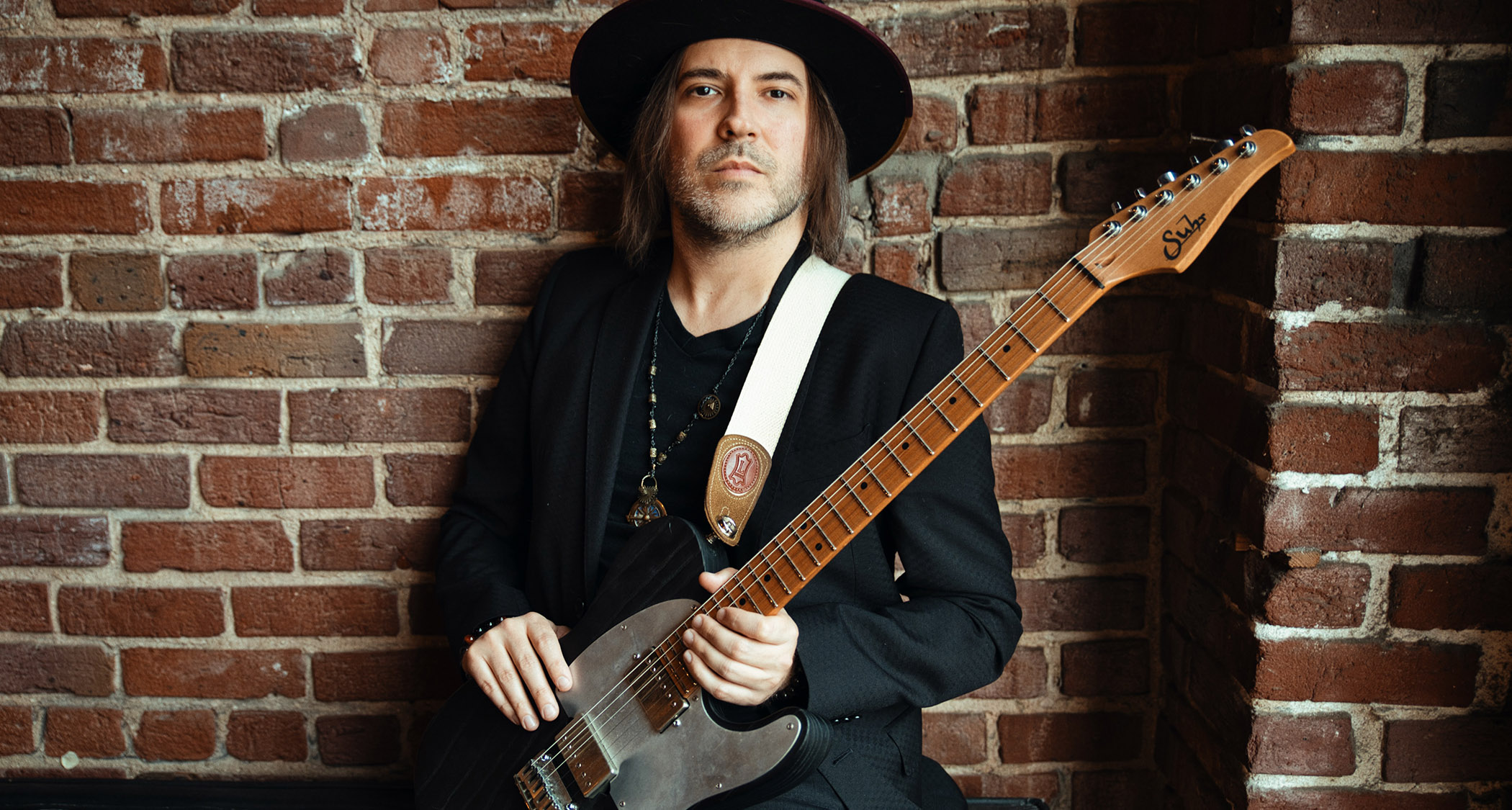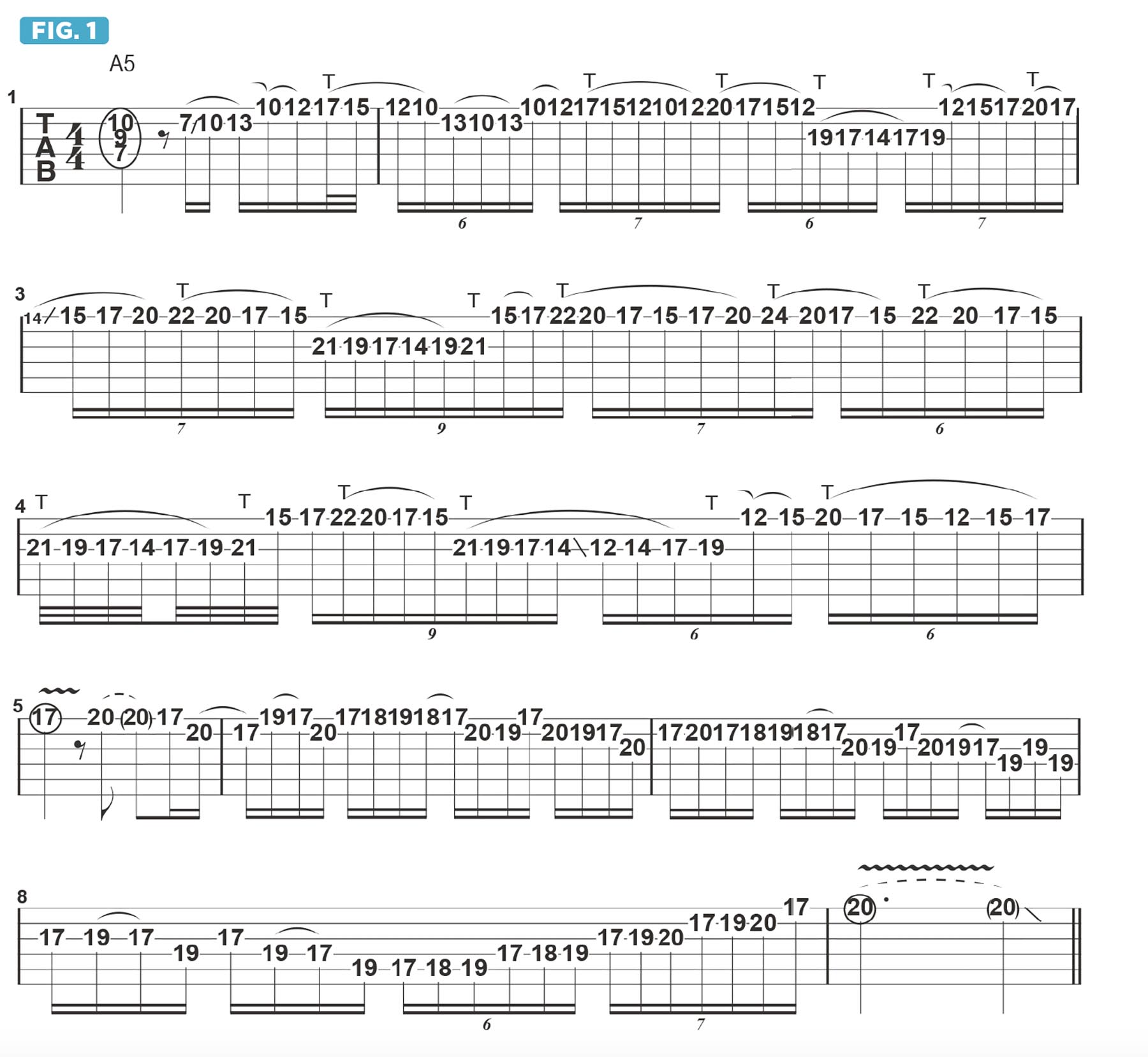
Free Range Chicken, from my latest album, Charisma, has a challenging solo, which is fun, highly unusual and instructive, as it begins with a deluge of notes that are performed with various fretboard tapping techniques but in a country-style setting.
The eight-bar guitar solo shown in Figure 1 can be viewed as two four-bar elements. Bars 1-4 are articulated with fast, quickly shifting tapping patterns on the top three strings, and bars 5-8 are played in a conventional manner with alternate picking.
Bar 1 starts with an A5 power chord, followed by the first tapped pattern. On beat 3, I begin by sliding my fret-hand index finger from the B string’s 7th fret to the 10th-fret A note. I follow this with a ring-finger hammer-on to C at the 13th fret.
The index finger then jumps over to the 1st string and hammers on “from nowhere" to D at the 10th fret, followed by a middle-finger hammer-on to E two frets higher then a fretboard tap on a high A at the 17th fret.
This tapped lick is based entirely on the notes of the A minor pentatonic scale – A, C, D, E, G – as illustrated in Figure 2. It might not sound that way because it goes by so fast, but scale-wise it’s actually pretty simple.
Over the next two beats, this fretboard shape, built from A to C on the 2nd string followed by the notes D, E and G and a tapped high A on the 1st string, is played twice. At the end of beat 2, I begin the next pattern with a tap on a high C note at the 20th fret on the 1st string, as my fret hand shifts up to 12th position. The three notes now fretted conventionally are E, G and A.
The last note on the 1st string is E at the 12th fret, so in order to continue down the scale, I skip over to the 3rd string and tap D at the 19th fret, followed by pull-offs to C and A. I then hammer-on back up to C, followed by another tap on D. I then essentially repeat the tapped pattern in 12th position on the 1st string.
All the latest guitar news, interviews, lessons, reviews, deals and more, direct to your inbox!
Figure 3 offers a more isolated look at this initial pattern, as articulated on the top two strings. A good way to get this under your fingers is to cycle through it “Eddie Van Halen” style, as shown in Figure 4.
In bar 3 of Figure 1, the concept is then shifted up the fretboard a step and a half, to 15th position, where I play similar tapped patterns on the 1st and 3rd strings. Notice on beat 3 that I tap a high E note at the 24th fret. I remain in 15th position until beat 3 of bar 4, where I shift back down to 12th position and wrap up the tapped section.
Bars 5-8 are based on the A blues scale (A, C, D, Eb, E, G) with occasional chromaticism added across the top five strings.
I had played the tapped section on the demo recording almost as a joke, but my engineer Ben Eller said, “That has to be on the record!” So here it is in all its haphazard glory!
- Charisma is out now via BFD.




